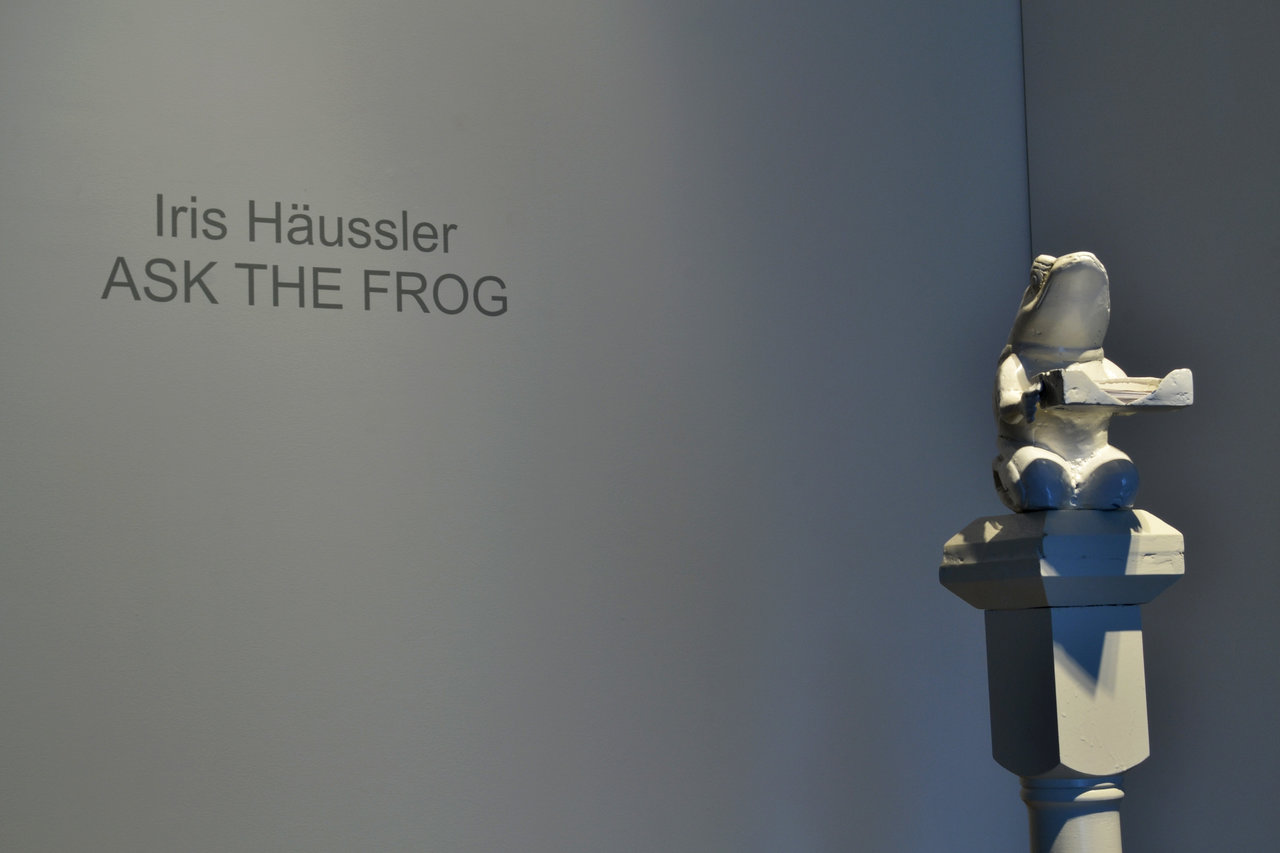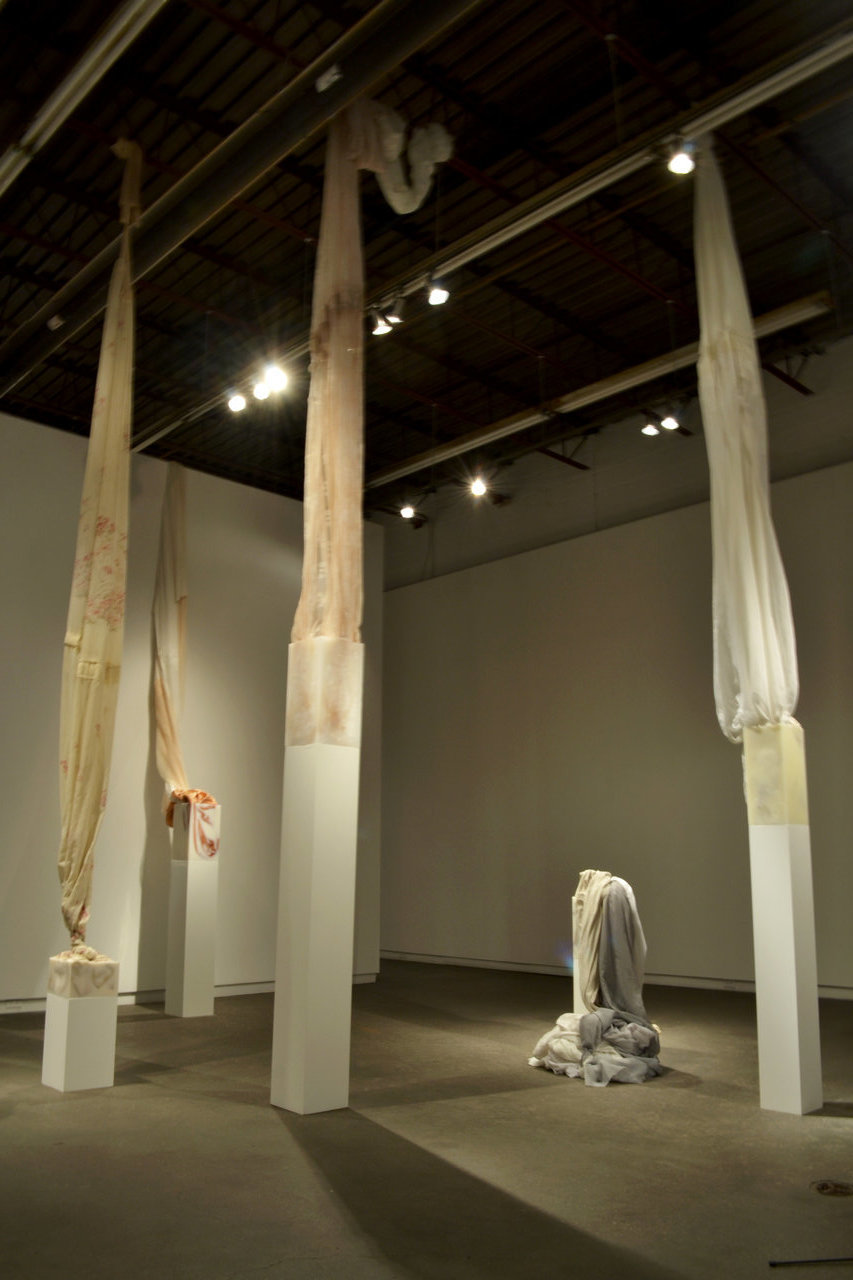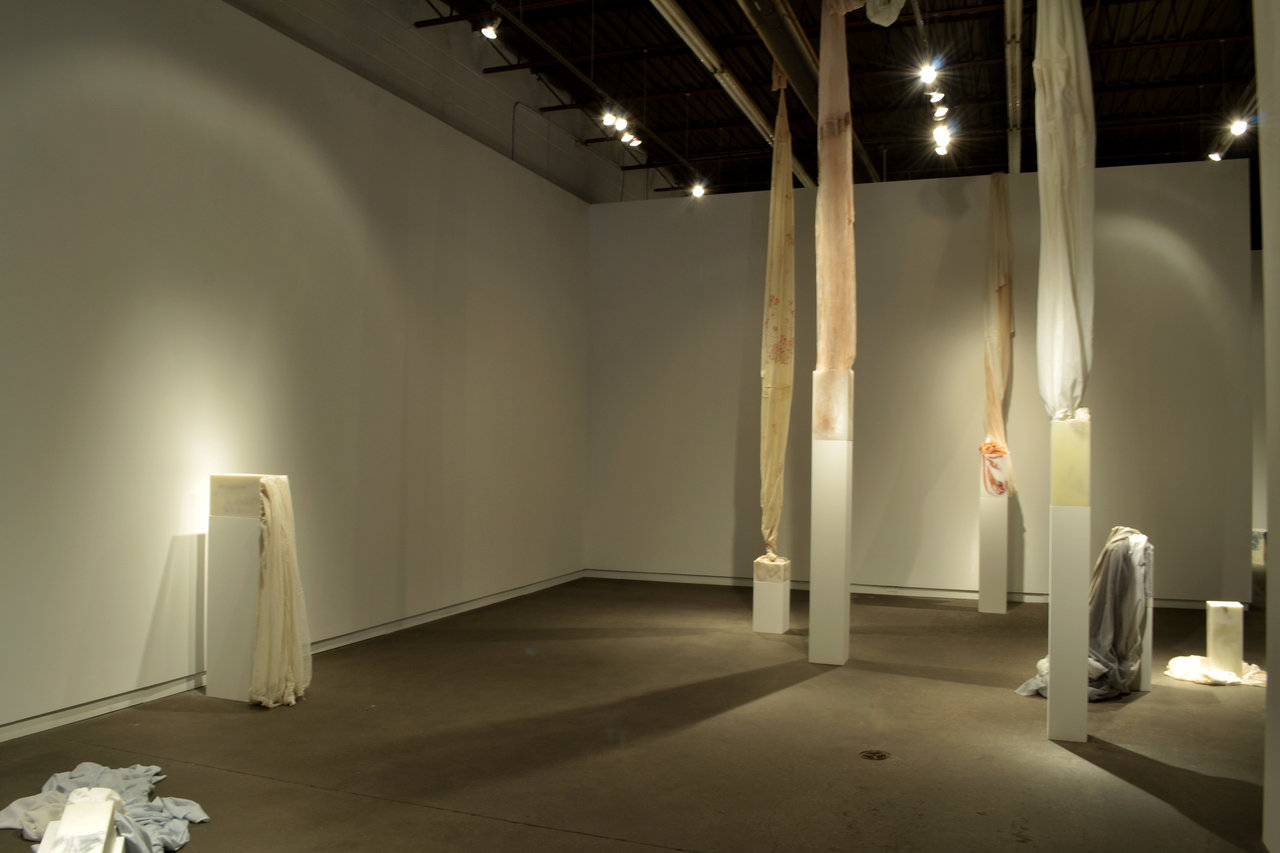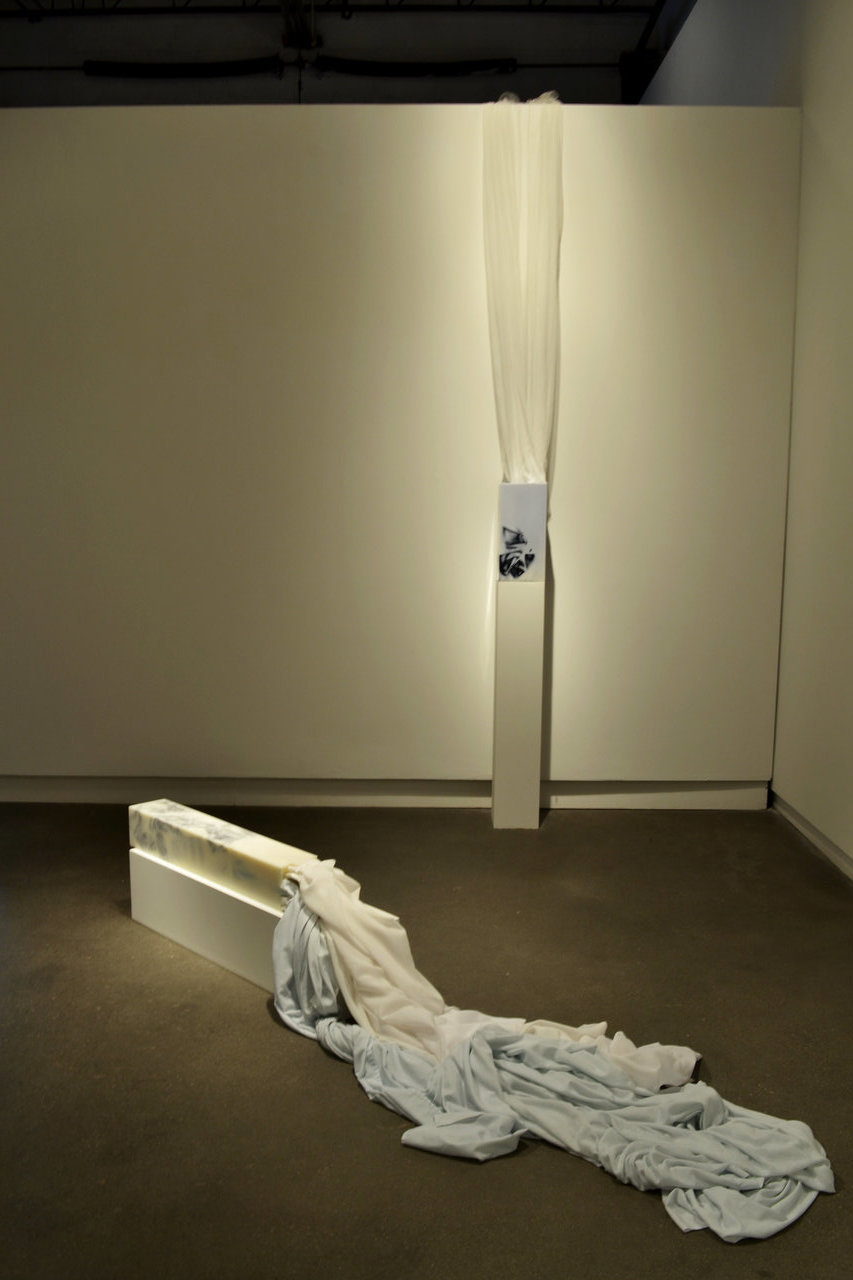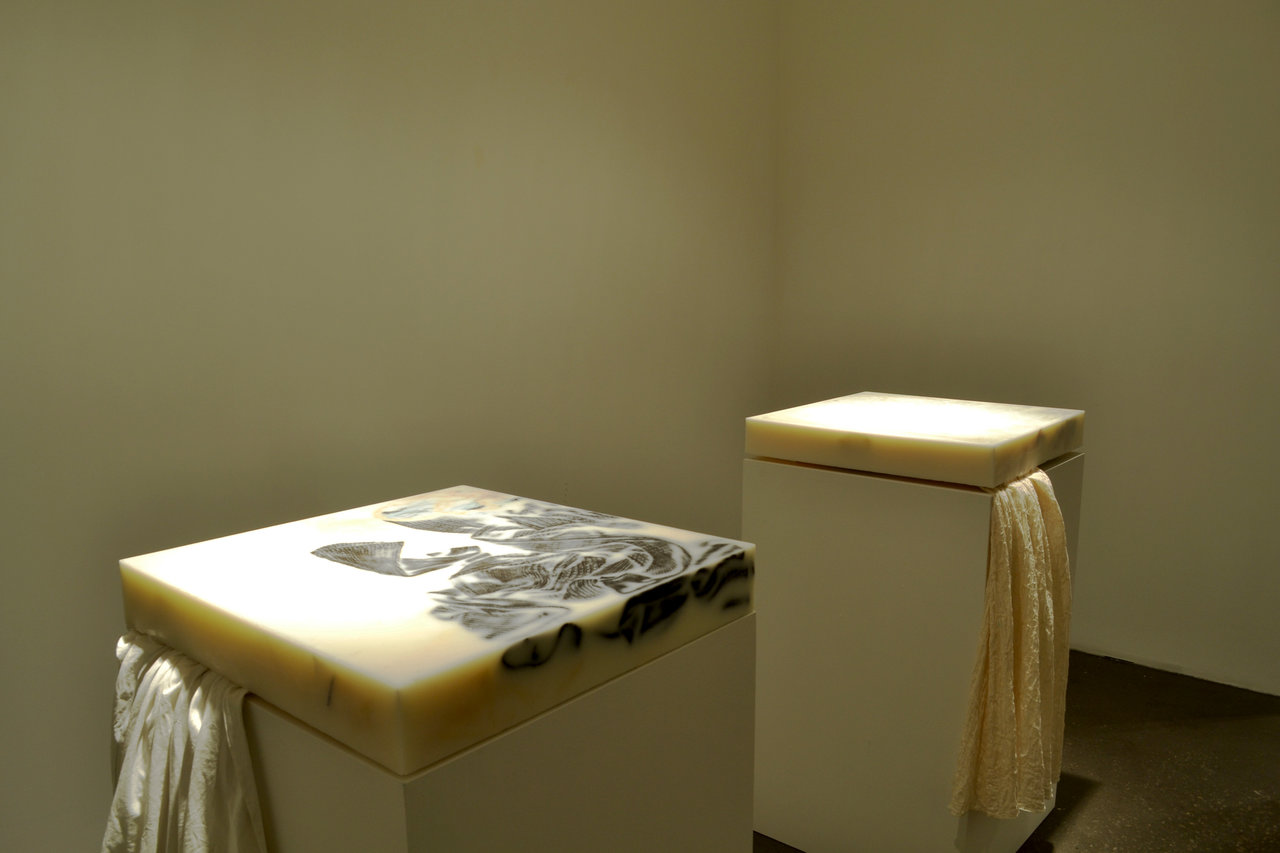There is a great sense of ambiguity to life, despite our best efforts to predict how it will develop or understand why it unfolded a particular way. Such is the nature of reality and time, and it is our folly to pursue these endeavors in order to alleviate the confusion and fear that comes from not knowing. We will approach fortune-tellers with crystal balls, Tarot card readers, or, through Iris Hӓussler, a frog. This wax being stands atop its pedestal willing to provide answers to any questions that are posed. Simply ask and from its hands, select its response. However, like the other mystics we turn to for clairvoyance, its answers are as vague as the future we try to foretell, though this does not mean they are wrong. The significance of these one-word revelations (which are written in German) may not necessarily apply to your immediate dilemmas, but they may unfold over time and in various forms.
Hӓussler’s Ask the Frog explores this very idea of the general shroud of ambiguity that surrounds our reality. As aforementioned, the frog welcomes the audience with relief to their most grievous uncertainties. Yet these are simply singular words that have multiple definitions and connotations, not to mention the inevitable subjectivity of personal experiences that will affect their interpretation. Furthermore, not all of its answers may be positive and encouraging; on the contrary, many foretell anger and sadness. The fact remains that the frog’s responses is a means of trying to find clarity in our future and present, and the ambiguity and unspecific meanings of its replies mirror the reality we asked it to simplify.
The exhibition continues into a series of sculptures: bed sheets and curtains partially encased in solid blocks of wax. The grey and orange fabrics create flowing patterns in the white prisms, similar to the appearance of marble. Concurrently, the remainder of the soft material protrudes from the firm encasing. In some instances, they drape freely downwards towards the floor. In other cases, they ascend up to the ceiling and along the walls, almost like columns. Two of the wax blocks placed on the floor while others rest on pedestals to give a sense of their floating ominously above the ground. They remain distant from the walls, entering the viewers’ space for a more complete presence as opposed to being confined like paintings or photographs with only one possible perspective. The sculptures become immersed with the audience rather than separated, which allows the audience to appreciate them from every angle and to freely walk among them in wonderment. The bright, warm lighting is absorbed by the wax to emit a soft glow while the fabrics become vibrant as it peers through the weaves.
It is a luminous and uncanny scene to behold, as if it were the ruins of an ancient temple – that falling cloth now becoming hardened into the sharply-defined geometric prisms that would support the entire structure. In doing so, the fabric surrenders its original functionality and characteristics to that of the wax. What was once free and unbound, pleasant and tactile, is now restrained within a languid prison of ambiguity with only faint remnants of what it once was.
Text and photo: Simon Termine
*Exhibition information: June 11 – July 25, 2015, Daniel Faria Gallery, 188 St Helens Avenue, Toronto. Gallery hours: Tue–Fri 11 am –6 pm; Sat, 10 am – 6 pm.

